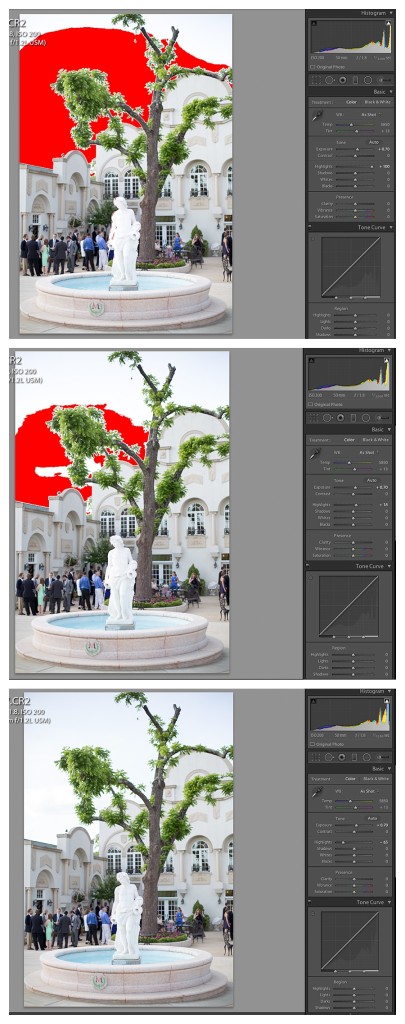Film Friday | Film vs Digital | Part 2 – Dynamic Range | Northern Virginia Film Wedding Photographer
.jpg)
Ok, my quest to convert all of you to film loving peeps continues. Just kidding. But I am going to spend the next journal entry talking about how film kicks digital’s butt (In my own opinion, of course). Tehe ;) If you missed Part 1 of this series, check out last Friday’s Journal Entry here. It’s all about color! And it’s time to get down and nerdy again!
Dynamic range. Ok, I’ve already lost some of you… I’ll start by giving you Ken Rockwell’s definition, “In photography, dynamic range is the difference between the lightest light and darkest dark which can be seen in a photo. Once your subject exceeds the camera’s dynamic range, the highlights wash out to white, or the darks become black blobs.” (You can see the full article by clicking here)
Ok, got it. As a photographer and artist I love high-key, or overall bright, images. So when I consider dynamic range, I’m most concerned about the lightest lights (and trying not to wash them out). I intentionally overexpose my images and when I do this I have to be very mindful of the highlights. If I overexpose an image too much, I will loose detail in the highlights. This is incredibly easy to do when shooting digitally.
See the histogram in the digital pictures below? The histogram is that small graph in the upper right corner of the pictures. When I click on the little arrow in the upper right corner the highlights that are clipped in the image will appear in red. I can then adjust the image (by decreasing the highlights and/or exposure) to bring data back into those areas. Pretty nifty, right?

You might ask, “but wouldn’t you have to be just as careful with film?” Well, not really. See, digital cameras are pretty horrible at handling highlights. They can only record the whites/highlights up to a certain point then the camera goes, “Crap! I can’t see that bright!” and it “clips” the data. Clipping means that the camera doesn’t record any data for that area in the image. So if you clip data in the camera it’s gone. Finito. You can’t get it back. If you were to print an image with a lot of clipped data, and if you looked really closely, you would see that no ink was printed in those areas. Ok, so what? Maybe it isn’t a big deal to some folks, but wouldn’t you rather have that data if you could?
This is one of the reasons I love film soooo much. Film, for whatever technical reasons, has so much more latitude for overexposure. Where I would lose details/data in the highlights on a digital camera, film preserves gracefully. Don’t get me wrong, you can certainly ruin a shot on film by overexposing too much. But film is much more forgiving and I can push the boundaries a bit further, giving me the swoon-worthy results I’m after.
Here are two images as an example. The image on the left is film, the image on the right is digital. Now, I’ve already edited the digital to mimic the film image. To complete this edit in LR I had to increase the exposure, adjust the contrast, adjust the color sliders, temperature, and tint, and I had to bring the highlights alllll the way down to zero. They look pretty close, right?
.jpg)
(Film) (Digital)
Guess what else? Even though I brought the highlights all the way down to ZERO, there is STILL clipping of some of the highlights! Yep, you can see the image below with the red splotches. That is where the highlights have been clipped and data is lost. But even without the bright red alarm of data death, you can see a difference with your naked eye in the images above. You can make out the reflection in the mirror a little better in the film image. And by better, I mean that you can see that something is there instead of a sheet of white. So some folks could care less. Some may even like the digital better. Seriously, this is yet another preference.
.jpg)
However, I must say again, that technology continues to improve and there are ways to handle this issue digitally. Any professional photographer worth their salt will shoot in RAW (instead of JPEG). This means that the image is not processed in the camera, but rather the photographer has to process the image in a software program.
Shooting RAW = MUCH bigger files = MORE data = MORE flexibility when editing
And as you can see in the example above, I was able to get the digital pretty darn close to the film. For many this would be satisfactory. I would even be ok with it if I didn’t have an alternative. BUT, given the choice I’d rather just shoot film and be done. Rather than shoot digital, spend hours in a software program getting the image to look the way I want it to, and still end up with an (IMO) inferior result.








Michael Bethea - here, here!
here’s to just shooting film and being done!
kristenlynnephotography - Yes Michael! I’ve become intolerant to spending hours and hours on the computer editing! ;) Film has spoiled me.
FILM FRIDAY | FILM VS DIGITAL | PART 3 – Aesthetic | NORTHERN VIRGINIA FILM WEDDING PHOTOGRAPHER » Fine Art Virginia Wedding Photography by Kristen Lynne Photography - […] Part 2 we discussed dynamic range and how film handles it beautifully. Again, I love to overexpose my images by a stop or two (or on occasion three!) and film allows me […]